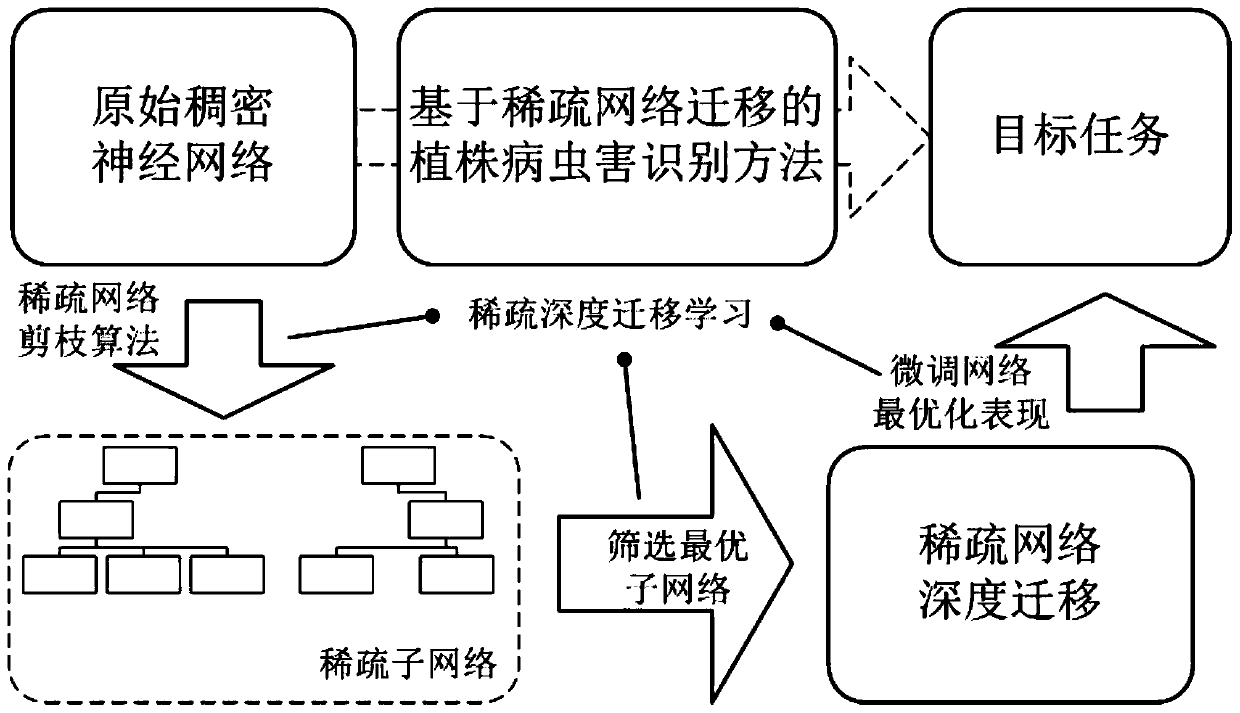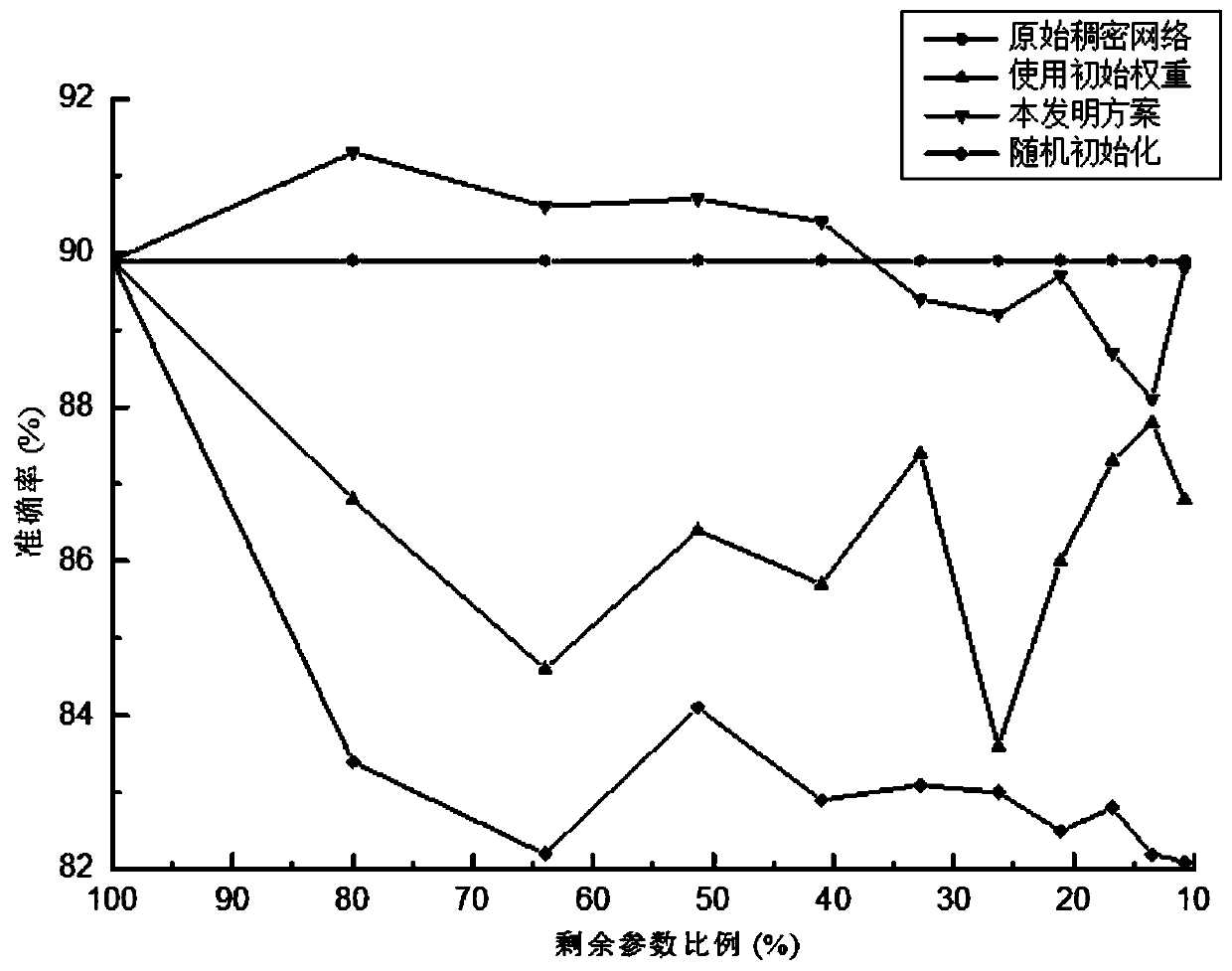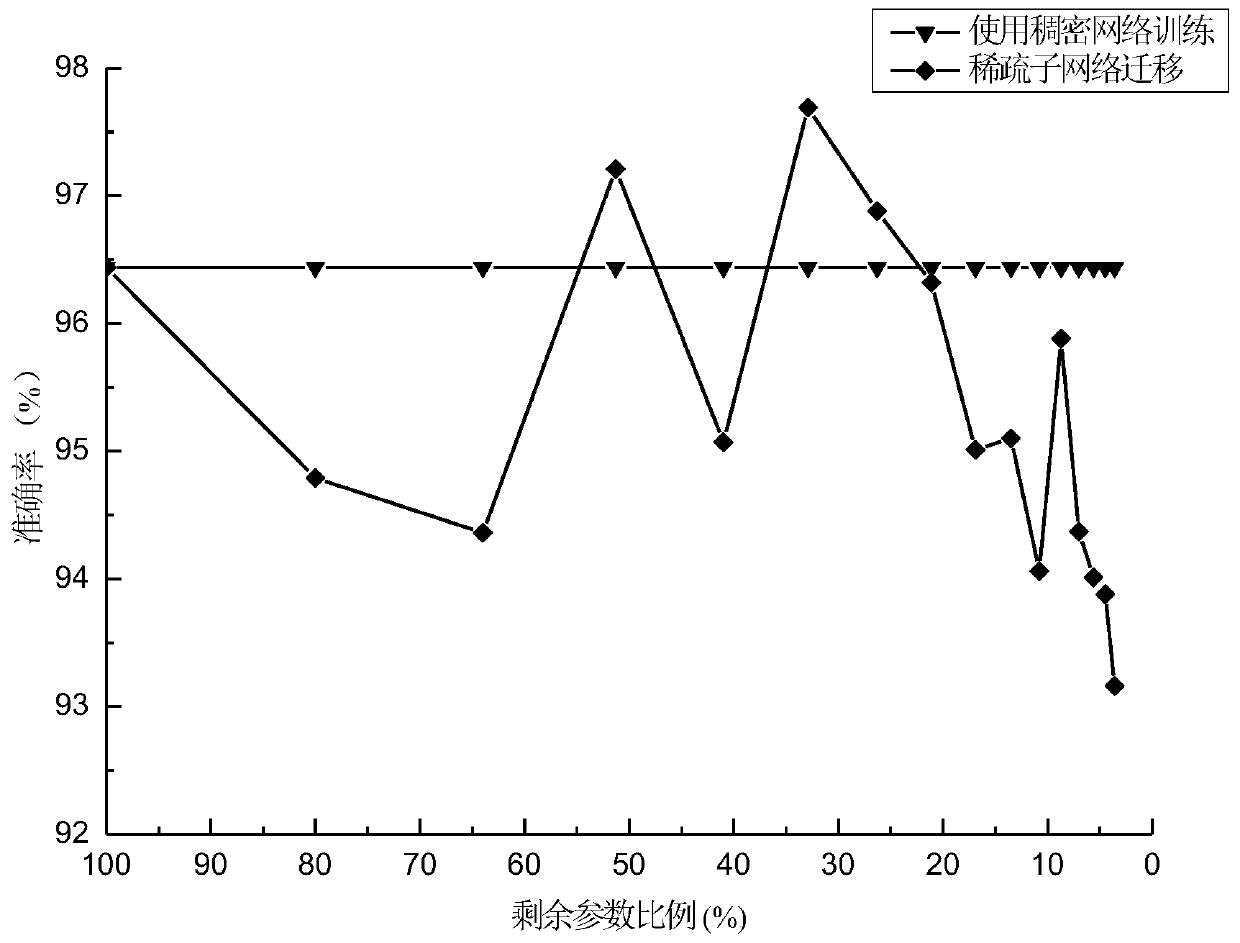Plant disease and insect pest identification method based on sparse network migration
A pest and network technology, applied in neural learning methods, character and pattern recognition, biological neural network models, etc., can solve problems such as time-consuming, high hardware requirements, and high computing costs, and achieve high computing overhead and low computing overhead , the effect of high accuracy
- Summary
- Abstract
- Description
- Claims
- Application Information
AI Technical Summary
Problems solved by technology
Method used
Image
Examples
Embodiment Construction
[0033] The specific implementation manners of the present invention will be further described below in conjunction with the accompanying drawings and technical solutions.
[0034] A method for identifying plant diseases and pests based on sparse network migration includes three stages: determining the optimal sparse sub-network in the source domain; migrating the sub-network to the target domain; using the target domain data to train the sub-network to detect pests and diseases.
[0035] The first stage is to determine the optimal sparse subnetwork in the source domain. In this stage, the pruning algorithm is used to iteratively traverse the original deep network that can be used for disease and insect identification, and the redundant weights in the network are determined and frozen so that they do not participate in the training, so as to suppress the structure in the network that has no obvious effect on the feature extraction of disease and insect pests, and reduce the The...
PUM
 Login to View More
Login to View More Abstract
Description
Claims
Application Information
 Login to View More
Login to View More - R&D
- Intellectual Property
- Life Sciences
- Materials
- Tech Scout
- Unparalleled Data Quality
- Higher Quality Content
- 60% Fewer Hallucinations
Browse by: Latest US Patents, China's latest patents, Technical Efficacy Thesaurus, Application Domain, Technology Topic, Popular Technical Reports.
© 2025 PatSnap. All rights reserved.Legal|Privacy policy|Modern Slavery Act Transparency Statement|Sitemap|About US| Contact US: help@patsnap.com



